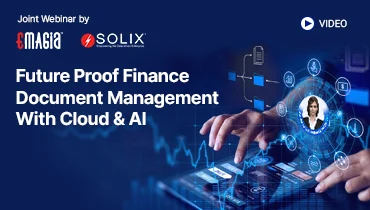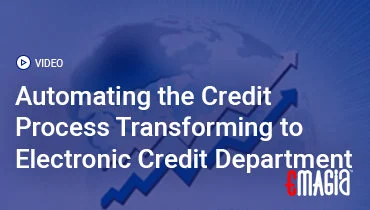In today’s fast-paced business world, a company’s financial health hinges on more than just its sales numbers. The ability to effectively manage credit, from the moment a sale is made until the payment is securely in the bank, is a critical factor for sustainable growth. Poor credit control can lead to a domino effect of cash flow problems, bad debts, and lost opportunities. This comprehensive guide will explore the profound impact of modern credit management on your business, delving into the core principles, the undeniable benefits, and the cutting-edge technologies that are reshaping the landscape.
We’ll unpack how a proactive approach to credit not only safeguards your bottom line but also strengthens your customer relationships and provides a crucial competitive advantage. From assessing risk with surgical precision to automating collections with intelligence, we’ll cover every angle of what it takes to build a robust and resilient financial operation. Whether you’re a small business owner or a finance director at a large corporation, understanding these services is no longer optional—it’s essential for thriving in a complex economic climate.
What Exactly is Credit Management? The Core of Financial Health
At its heart, credit management is the strategic process of granting credit and then diligently collecting payments. It’s an entire ecosystem of policies, procedures, and practices designed to control a company’s accounts receivable. This isn’t just about chasing overdue invoices; it’s a holistic approach that begins long before a credit line is extended. The ultimate goal is to maintain a healthy cash flow, minimize the risk of bad debt, and foster strong, long-term relationships with customers. A well-oiled credit management system is the backbone of a financially stable business.
The Essential Pillars of a Strong Credit Management Program
A successful program stands on several key pillars, each playing a vital role in the overall process. Neglecting any one of these can create a weak link that jeopardizes the entire system.
- Credit Risk Assessment: This is the starting point. It involves evaluating a potential customer’s creditworthiness to determine if they are a reliable borrower. This includes analyzing financial statements, credit history, and payment behavior.
- Establishing Credit Policies: Clear, consistent policies are the rulebook for your business. They define who is eligible for credit, what the terms are (e.g., Net 30, Net 60), and the process for handling late payments.
- Invoice and Billing Management: The journey of payment begins with the invoice. Ensuring invoices are accurate, timely, and easy for customers to understand is a foundational step in preventing delays.
- Proactive Collections: This involves more than just a stern phone call. It’s a strategic process of gentle reminders, clear communication, and, when necessary, more formal follow-up to ensure payments are received on time.
- Reporting and Analysis: Constantly monitoring key performance indicators (KPIs) like Days Sales Outstanding (DSO) helps you identify trends, pinpoint issues, and make informed decisions to improve the process.
Why Businesses Need Professional Credit Management Solutions
Many businesses, especially smaller ones, attempt to handle credit management in-house. While this may seem cost-effective initially, the complexities and time commitment often lead to inefficiencies and increased risk. Professional credit management services offer a strategic advantage that goes beyond simple debt collection. They bring specialized expertise, advanced technology, and a dedicated focus that can transform your financial operations.
Core Benefits of Outsourcing Credit Management
Improving Cash Flow and Liquidity
One of the most significant benefits is the direct impact on your cash flow. A professional service accelerates the collection process, reducing your Days Sales Outstanding (DSO) and ensuring a steady flow of funds. This increased liquidity allows you to meet operational expenses, invest in new projects, and seize growth opportunities without relying on costly short-term borrowing.
Reducing Bad Debt and Default Risks
Professional services use sophisticated tools and extensive databases to perform thorough credit checks and risk assessments. By identifying high-risk customers before extending credit, they significantly lower your exposure to bad debt. They also employ proactive collection strategies that are more likely to secure payment from delinquent accounts before they become unrecoverable.
Enhancing Customer Relationships
You might think that a third party handling collections could harm customer relations, but the opposite is often true. A professional firm acts as a neutral party, following a respectful and consistent process. This removes the awkwardness and potential for conflict that can arise when internal staff has to chase payments from long-standing clients. It allows your sales team to focus on building relationships and generating revenue, while the experts handle the financial details with diplomacy.
Unlocking Business Growth and Profitability
When your credit management is handled efficiently, it frees up your internal resources to focus on your core business. Your employees can dedicate their time to innovation, marketing, and sales, which are the engines of growth. Furthermore, a well-managed credit portfolio allows you to confidently extend credit to new customers, knowing the risk is controlled. This can lead to increased sales and market share.
The Evolving Landscape: AI in Credit Management Services
The field of credit management is undergoing a revolutionary transformation, driven by the power of artificial intelligence (AI) and machine learning. AI-powered platforms are moving beyond simple automation to provide predictive insights, enhance risk assessment, and personalize the collection process. This new wave of technology is making credit management faster, more accurate, and more strategic than ever before.
Key AI-Powered Features in Modern Credit Management Platforms
AI-Led Risk Assessment and Credit Scoring
Traditional credit scoring relies on historical data and predefined rules. AI, however, can analyze vast, unstructured datasets—including social media signals, news articles, and real-time market trends—to provide a more dynamic and accurate risk profile. This allows for a more nuanced understanding of a customer’s creditworthiness, leading to smarter lending decisions and a reduction in defaults. AI can also continuously monitor customer portfolios, flagging potential risks before they become a problem.
Automated Document Recognition and Data Extraction
Manual data entry is a major source of error and inefficiency. AI-powered Optical Character Recognition (OCR) technology can instantly scan and extract data from a wide variety of documents, such as invoices, contracts, and financial statements. It not only speeds up the onboarding process but also ensures data accuracy by cross-checking information across multiple sources. This reduces the risk of human error and frees up staff for more strategic tasks.
Intelligent Collection Prioritization and Workflow Automation
AI algorithms can analyze customer payment behavior, communication history, and other factors to segment debtors into different risk categories. They can then prioritize collection efforts, automatically sending personalized reminders via the most effective channel (email, SMS, etc.). This intelligent automation ensures that high-risk accounts receive immediate attention, while low-risk accounts are handled with minimal manual effort, improving recovery rates and reducing administrative costs.
Generative AI for Personalized Communication
Generative AI models are changing how businesses communicate with their customers. These models can create natural, human-like language for payment reminders, follow-up emails, or even customized denial explanations that are clear and empathetic. This personalized communication can significantly improve the customer experience and lead to better payment outcomes without damaging relationships.
Implementing a Robust Credit Management Strategy for Your Business
Building a strong credit management program requires a clear strategy and a commitment to continuous improvement. It’s not just about choosing a provider; it’s about establishing an internal culture of financial responsibility and using the right tools to support it. A successful strategy will integrate technology, people, and processes seamlessly.
Steps to Building a Powerful Credit Management System
1. Define Clear and Consistent Credit Policies
Start by creating a written credit policy that outlines your terms, conditions, and procedures. This policy should be a living document that is reviewed and updated regularly. It should cover everything from the application process for new credit to the steps for handling late payments. Make sure this policy is easily accessible to both your employees and your customers.
2. Leverage Technology to Automate and Analyze
Invest in credit management software or partner with a service provider that uses a modern, AI-driven platform. Look for solutions that offer automated credit scoring, real-time reporting, and intelligent workflow automation. This technology will not only save time and reduce errors but also provide invaluable insights into your financial performance.
3. Prioritize Training and Communication
Ensure that all relevant staff—from sales and finance to customer service—understand the credit policy and their role in the process. Encourage open communication between departments to prevent missteps. For example, the sales team should be aware of a customer’s credit status to avoid extending credit to a high-risk account. When a customer is late on a payment, it should be handled through a defined process that avoids internal conflict.
4. Continuously Monitor and Adapt
Credit management is not a one-time setup; it’s an ongoing process. Regularly monitor your key performance indicators (KPIs) and review your strategies. Are you collecting payments faster? Is your bad debt decreasing? Use this data to refine your policies, optimize your automated workflows, and adapt to changing market conditions. This proactive approach will ensure your credit management remains effective over the long term.
Choosing the Best Credit Management Service Provider
With so many options on the market, selecting the right partner can seem daunting. The ideal provider should be more than just a vendor; they should be a strategic extension of your finance team. Your choice will have a direct impact on your cash flow, customer relationships, and overall financial stability, so it’s essential to evaluate potential partners carefully.
Critical Criteria for Evaluating Providers
Reputation and Experience
Investigate the provider’s track record and industry reputation. Look for testimonials, case studies, and reviews from businesses similar to yours. A company with extensive experience in your industry will have a deeper understanding of your specific challenges and regulatory requirements.
Transparency in Services and Fees
A reputable provider will be completely transparent about its services, pricing structure, and terms. Avoid companies that offer vague promises or charge excessive upfront fees. Get a clear breakdown of all costs, including any one-time setup fees, monthly charges, and contingency fees for recovered debts.
Technology and Automation Capabilities
In the age of AI, the technology a provider uses is a key differentiator. Look for platforms that offer advanced features like AI-driven risk assessment, automated workflows, and robust reporting. The solution should also be flexible and configurable, allowing you to tailor it to your unique business needs without requiring extensive IT support.
Integration with Your Existing Systems
A new system should not create more work. Ensure the provider’s platform can seamlessly integrate with your existing Enterprise Resource Planning (ERP) and accounting systems (e.g., SAP, Oracle, etc.). This will prevent manual data entry, reduce errors, and ensure a smooth flow of information across your organization.
Customer Support and Communication
A good partner will offer more than just a platform; they will provide ongoing support and strategic advice. Evaluate their customer service. Are they responsive? Do they offer dedicated support? Will they provide regular performance reports and collaborate with you to improve your credit management strategy?
Understanding the Differences: Credit Management vs. Debt Collection
It’s a common misconception that credit management is the same as debt collection. While debt collection is a component of credit management, it represents a reactive and late-stage action. Credit management is a proactive, end-to-end process that aims to prevent debt from becoming an issue in the first place.
- Credit management is focused on the entire lifecycle of credit, from assessing risk and setting terms to billing and proactive payment reminders. Its goal is prevention and optimization.
- Debt collection is a specific, reactive process that begins once a payment is already overdue. Its sole purpose is to recover funds from delinquent accounts.
A strong credit management strategy minimizes the need for aggressive debt collection by ensuring fewer accounts ever reach that stage.
Strategies for Managing Credit During Economic Downturns
Economic uncertainty can significantly impact your accounts receivable. During these times, a well-defined credit management strategy becomes even more critical. Businesses must be agile, analytical, and empathetic to navigate the challenges without jeopardizing long-term relationships.
Adapting Your Strategy in a Volatile Economy
Tighten Credit Policies and Risk Thresholds
During a downturn, it’s wise to be more cautious when extending credit to new or existing customers. You may need to lower credit limits, require stricter payment terms, or increase the frequency of credit reviews. This proactive risk mitigation can protect you from a surge in bad debts.
Embrace Flexible Payment Plans
Instead of immediately resorting to aggressive collection tactics, consider offering flexible payment plans to customers who are struggling. This shows empathy and can help you recover a portion of the debt while maintaining a positive relationship. A customer who feels supported is more likely to return when the economy improves.
Increase Proactive Communication and Monitoring
Step up your communication with customers to stay ahead of potential issues. Use automated reminders to prompt payments before they are due. Actively monitor your accounts receivable and follow up on late payments promptly. The earlier you address a problem, the more likely you are to resolve it.
How Emagia Helps Businesses Transform Credit Management
Emagia offers an advanced AI-powered platform designed to reinvent the entire order-to-cash process, including credit management. The solution is built on a foundation of cutting-edge technology that empowers businesses to move beyond manual processes and embrace a data-driven, automated, and intelligent approach. By leveraging its powerful predictive analytics and conversational AI, businesses can streamline operations, mitigate risk, and significantly improve their financial outcomes.
Emagia’s AI-Driven Solutions for a Smarter Financial Future
- AI Credit Risk Management: Emagia’s system utilizes deep learning to provide real-time credit risk scores, predict customer default probability, and automate credit decisions. This allows for faster customer onboarding and more accurate risk assessment.
- Intelligent Cash Flow Forecasting: The platform provides a dynamic view of your cash flow by predicting payment patterns and identifying potential bottlenecks. This empowers finance teams to make more informed decisions about working capital.
- Automated Collections: Emagia automates the entire collections process, from sending personalized reminders to escalating cases based on predefined rules. Its AI-powered engine optimizes the collection strategy for each customer, leading to higher recovery rates with less effort.
- Generative AI Assistant for Finance: The platform includes a conversational AI assistant that can answer questions about accounts receivable, generate reports, and assist with complex financial tasks. This not only increases efficiency but also makes financial data more accessible to everyone on the team.
FAQs: The Most Common Questions About Credit Management Services
What is the main goal of credit management?
The primary goal is to optimize cash flow, minimize bad debt, and ensure the long-term financial stability of a business. It’s a proactive process that aims to prevent payment issues from occurring in the first place.
How does credit management software work?
Modern credit management software automates and streamlines various tasks, including credit risk assessment, invoice generation, payment reminders, and reporting. It uses data and, increasingly, AI to provide insights and automate workflows, reducing manual effort and improving efficiency.
Can I use a credit management service for personal debt?
While many of the principles are the same, credit management services typically cater to businesses managing their accounts receivable. For personal debt, you would look for a credit repair company, a debt consolidation service, or a credit counseling agency.
Is it better to hire a third-party service or handle credit management in-house?
The best choice depends on the size and complexity of your business. While in-house management offers more direct control, a third-party service provides specialized expertise, advanced technology, and a dedicated focus that can lead to better outcomes, especially for growing businesses or those with a large number of accounts.
How does AI improve credit management?
AI improves credit management by enhancing risk assessment with predictive analytics, automating repetitive tasks like data extraction and communication, and providing intelligent insights to optimize collection strategies. It makes the process faster, more accurate, and more strategic.


